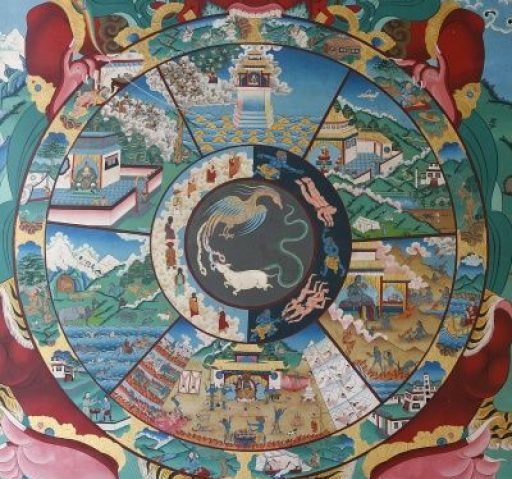the Dance of Demonhood
Revised Jan 24, 2023
What if the unDead could dance? What would they look like? Would you be scared? Watch a Japanese Butoh dancer and you might have your answers.
In Asian culture, good and evil function in a different way from Western society. Evil can rise up and become good. Good can fall and become evil. This is the law of impermanence from Buddhism. Therefore, even good and evil are not permanent. This means that bad things can evolve into the potential of good. I like this idea. Heaven and hell are not forever. . . .
Read more. . . . .
Tatsumi Hijikata (1928-1986) developed ankaku-buyo, the Dance of Darkness, which was later renamed as Butoh. Let the dancers of Butoh be our guide to the undead for this class. (Some sort of Asian Demon Class that I taught). In their movements lie the wisdom of inaction from blood lost and beasts who wander about in spirit. We may not feel comfortable when we see the whiteness of a dead body. However, we understand the pain that demons might feel if they could just danced. With Butoh, magic happens as we experience the dance of demons.
This dance of demons teaches us what we already know: the real horrors of pain and its the ultimate lust for purity of peace. White is often the color of death in Asia, for white is often worn at funerals. Usually in our lives, we can control and hide our emotions, but the dancers of Butoh present a welcomed honesty of primal emotions.
At the end of the samurai film, Twilight Samurai, a butoh dancer was chosen to fight and die as a samurai. Wise choice.
Borrowing the white make up used in Kabuki performances to enunciate actions while having dancers move about in an almost nude state often without any hair, Butoh, an old word for dance, was born in 1959. It has been controversial since its inception. What does it mean? Why are we moved by this dance of death?
Add some dashes of black, red, or other bold colors to contrast in the dead whiteness of the bodies, as the dancers appear to be representations of the moving unDead, hungry ghost lusting for artistic expressions and compassion.
The dance often takes on the subject of taboo or sexual decadence, depression, repression, or oppression, and has a zen like quality along with a celebration of the grotesque

and the macabre. Sometimes, it appears that dancers have on dry white mud while wearing old dirty white sheets.
Look closely at the zen dirt of suffering (dukka) and the ugliness of stress, and note the beauty in the wabi-sabi or the asymmetry of the dance of darkness: Butoh. Accept the unacceptable, the unDeadness of our existence and our society.
Indeed, we are all Japanese demons who dance the dance of Butoh.
Dance!
Sources:
Hermon, Dan, “What is Butoh Dance?” Butoh Net. <http://www.butoh.net/define.html >.
Butoh Net. “Online Essay and Definitions of Butoh Dance. http://www.butoh.net/definitions.html
–Doc Nirvana
AKA Dr. Wayne Stein
